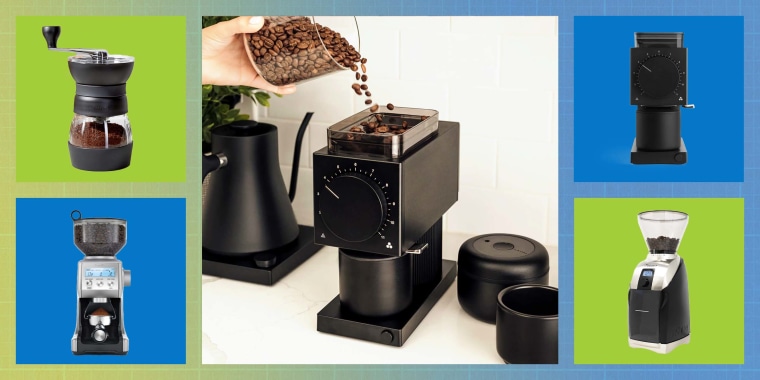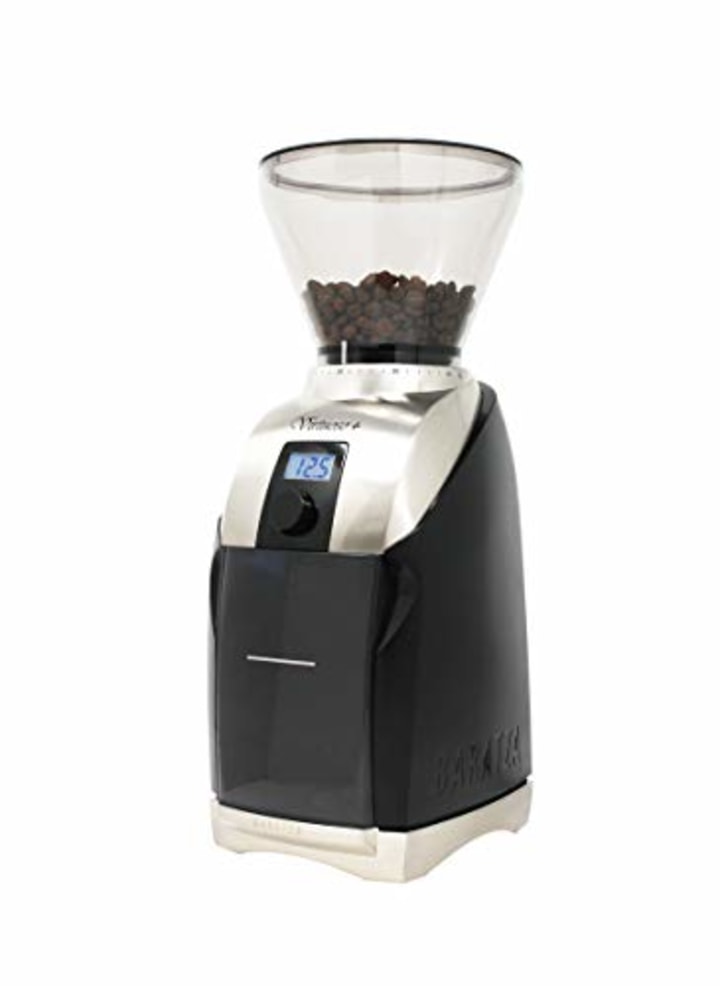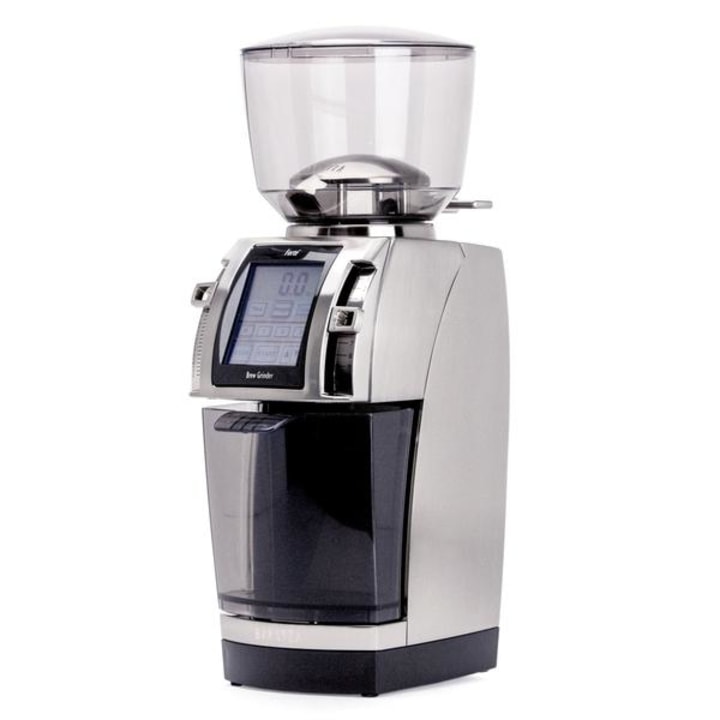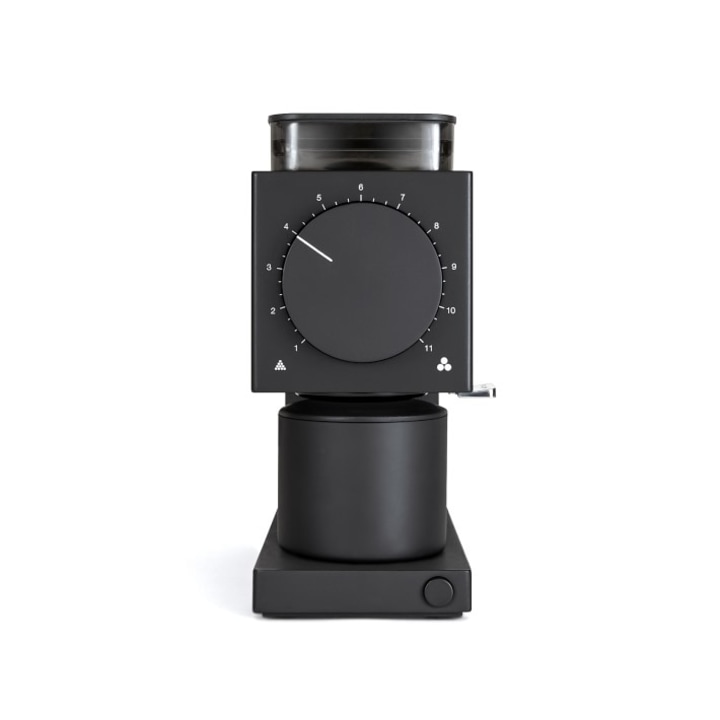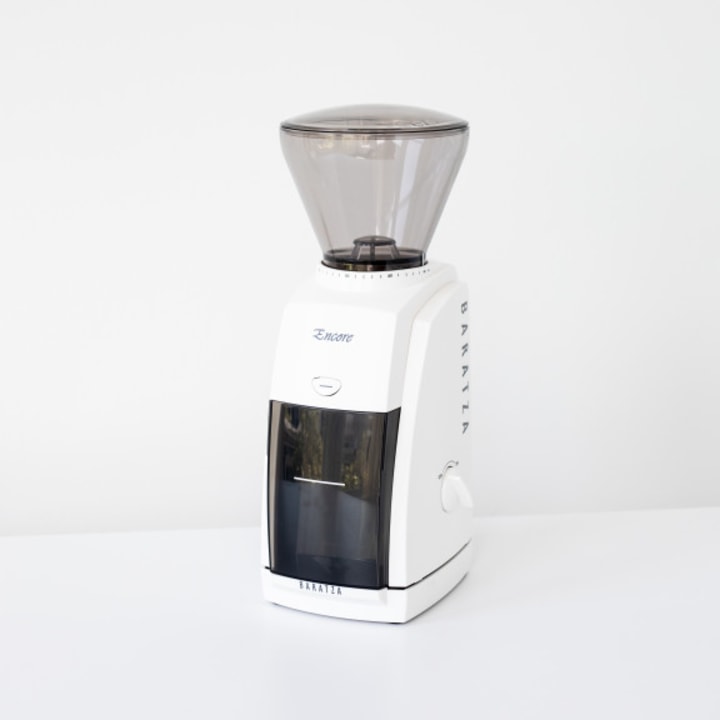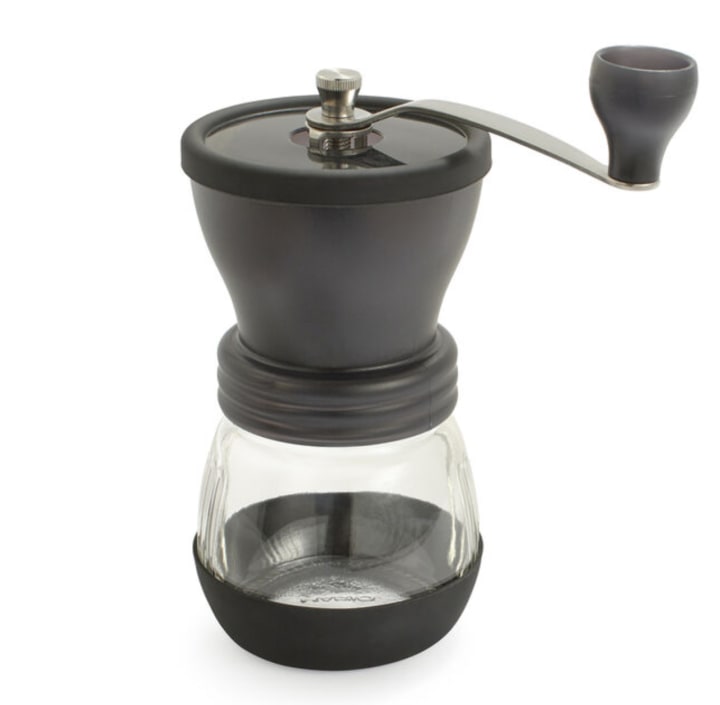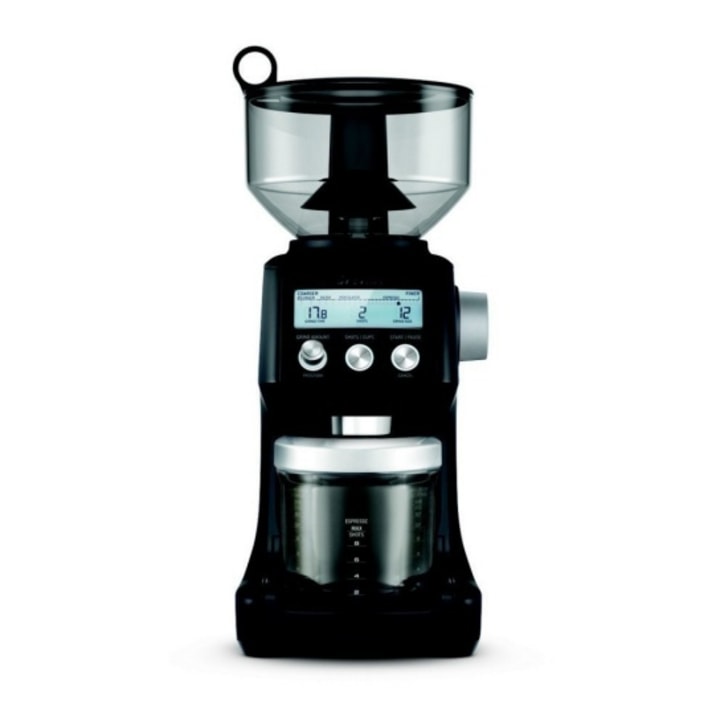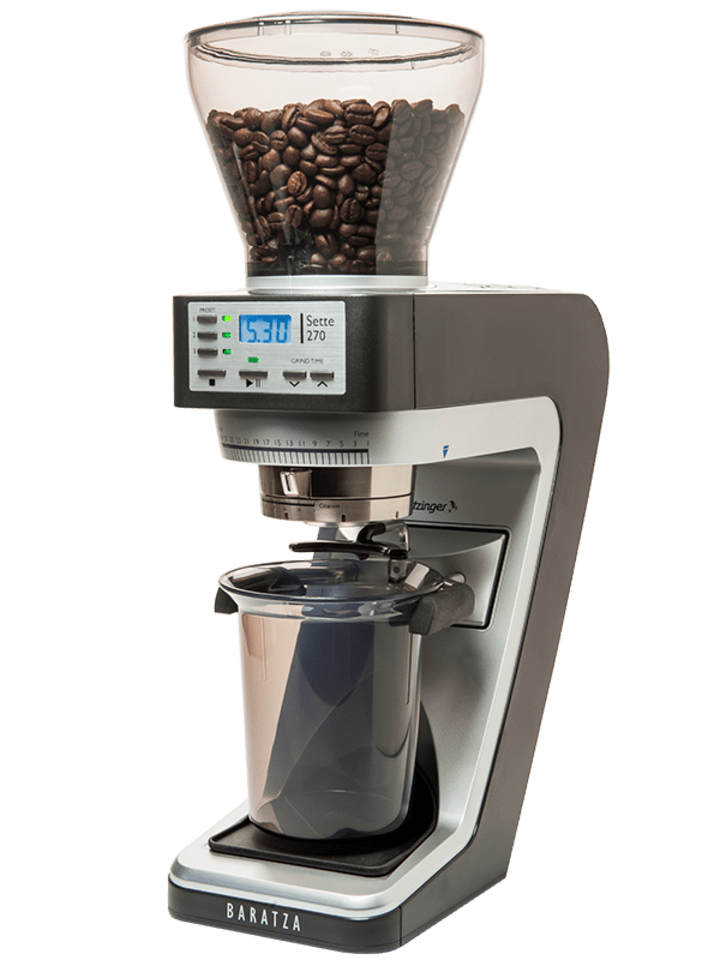One thing that many coffee drinkers don’t realize is that a quality brew comes down to more than just the beans. Though your beans can certainly be the difference between a swoon-worthy sip and something you’d rather spit out, the gear you use to prep that cup of joe can also impact how it turns out, especially when it comes to the grinder.
SKIP AHEAD Why a coffee grinder matters | How to shop for a coffee grinder
“A coffee grinder is a mechanism that is used to break down coffee beans in preparation for brewing,” explained Serena Lerner, owner and founder of SkyTop Coffee. Coffee grinders are used for brewing all types of coffee, and they are one of the key components to creating high-quality brewed coffee, she said. “A grinder is literally the most important piece of coffee brewing equipment you can buy,” added Jiyoon Han, a certified Q grader coffee sommelier of Bean & Bean Coffee. “I can brew great coffee in just a mason jar with a filter if I have a good grinder.”
Whether you already have an extensive coffee setup at home with a good coffee machine or you’re only just investing in your equipment, experts helped us break down the different types of coffee grinders and explained the importance of investing in one. They also shared their favorite coffee grinders for every type of brew.
Types of coffee grinders to shop
There are two primary types of grinders on the market: blade grinders and burr grinders.
- Blade grinders are most associated with spice grinders — the medium is placed in the receptacle and a blade spins at high speed to chop it up, explained Lerner. Although they are both ubiquitous and easy to use, they also aren’t recommended by any of the experts we interviewed. That’s because though these grinders are often much cheaper, they are also much less reliable at producing that uniform grind size, noted Sumi Ali, CEO and cofounder of Yes Plz Coffee. “Spinning blades cut beans unevenly and tend to produce a large number of boulders and dust, making it hard to nail that perfect grind,” he explained.
- Burr grinders work much like pepper mills in that you have two metal “burrs" (or discs) that spin when grinding, allowing the beans to break down into even pieces as they pass through, explained Han. The pieces end up being more uniform in size and shape, therefore helping with an even extraction. “Basically, this means each piece of coffee is able to give you the same amount of the same kinds of flavors,” she said. “The result [is] a much better and more consistent cup. Burr grinders are the best for consistent, yummy coffee.”
There are also two different types of burr grinders: flat burr grinders and conical burr grinders.
Flat burr grinders “are horizontally mounted with the coffee flowing down into them,” Lerner explained. She said that these are the highest quality burr grinders, though she noted that they can be expensive and can sometimes produce heat if you are making a lot of coffee in a short period of time, “which can affect the taste of coffee.”
In a conical burr grinder, meanwhile, the burrs are mounted vertically. These are more common and also work relatively well, especially for espresso, explained Han. “They are often less expensive both in the initial purchase as well as when you need the burrs replaced, which will eventually need to happen,” she said. However, Lerner noted that although these are better than blade grinders and less expensive than their flat burr counterpart, they can still be pricey while offering “a fair amount of inconsistency in ground particle size.” Hand grinders most commonly use conical burr grinders.
Best coffee grinders to shop
Before checking out different coffee grinder models, Lerner recommended budgeting more money for a grinder than you expect. “Most folks invest in brewing equipment and then purchase an inexpensive grinder,” she said. “This can lead to a sub-optimal final product and you will miss out on all of the nuance and complexity of a coffee.” Below, we rounded up our experts’ recommendations for the best coffee grinders, all of which are burr grinders.
Best overall grinder: Baratza
Baratza Virtuoso+ Conical Burr Coffee
This grinder has commercial-grade conical burrs, 40 grind settings to let you pick your perfect size and a clear grounds bin backlit with LEDs. According to Ali, the Virtuoso+ is a solid pick due to the exceptional grind quality at a mid-range price point. “Baratza is an industry favorite because of their products’ reliability and [the brand’s] customer service,” he said. “Most of us in the coffee industry are service/hospitality people at heart, so when we find brands that embody that same obsession with customer service, it's easy to fall in love.”
Best splurge grinder: Baratza
Baratza Forté BG Coffee Grinder
In addition to a digital scale and timer, this steel flat burr grinder also has three programmable presets for one-touch grinding as well as 260 grind settings. It also has a polished metal body and a shut-off hopper that can hold up to 300 grams of coffee, Baratza says, making it easier to switch between different types of beans without a mess. “It’s the best of the best home/commercial grinder [that] incorporates all the features you would want for an incredible home brewing experience,” said Lerner.
Best style grinder: Fellow
Fellow Ode Brew Grinder
Drago Tomianovic, director of coffee at RAKO Coffee, recommended this grinder — which has 31 grind settings and 64-millimeter professional-grade flat burrs — thanks to its “beautiful, minimalist design and auto stop [function].” He also noted that he appreciates how quiet it is and how easy it is to clean, though he said it isn’t ideal for espresso. This sleekly designed option is also Lerner’s top pick as it’s styled after larger commercial grinders. “It's not all looks, though — this grinder cranks out super consistent particle-sized coffee and allows for simple adjustments to optimize your brew,” she said.
Best budget-friendly grinder: Baratza
Baratza Encore
This conical burr grinder has 40 individual grind settings and a hopper that can hold up to 8 ounces of whole beans, according to the brand. “These grinders are known to be bulletproof and Baratza has amazing customer service,” said Ali. In his opinion, though, the Encore is best suited for drip or French press and can't get fine enough for espresso. “The other downside of this grinder is that the body is all plastic so it probably won't be the most premium appliance in your kitchen,” he added, also noting that the grinder is “a bit on the loud side.”
Lerner also recommended this grinder, highlighting that it’s versatile, consistent, durable and economical. “In my professional opinion, it’s the best entry-level grinder on the market,” she said.
Best basic hand grinder: HARIO
HARIO Ceramic Coffee Mill Skerton Plus
This is a classic, entry-level burr model with a washable ceramic mill and storage jar for grinds. “[The] HARIO Ceramic Coffee Mill Skerton Plus is a great option for a basic hand grinder,” said Ali. “It won't break the bank, grind adjustments are straightforward and it's durable.”
Best overall smart grinder: Breville
Breville Smart Grinder Pro
The grinder that Ali recommended the most is the Breville Smart Grinder Pro, and it’s also what he personally uses every day. “The Smart Grinder Pro is super easy to use and can handle a range of grind sizes from espresso to French press while looking great on my countertop,” he said. “It isn't cheap, but I am confident that this grinder will stand the test of time coming from Breville.”
Lerner also recommended this grinder — what makes this model stand out for her is that “the unit features Breville’s ‘Dosing IQ,’ which gives the user control of dosing time just like commercial espresso for precise brewing recipes.”
Best splurge smart grinder: Baratza
Baratza Sette 270 Conical Burr Coffee Grinder
This grinder has a built-in scale and programmable buttons with grind time settings within 0.01 seconds. “This is a wonderful pick if you brew both espresso and filter coffee at home,” said Ali. Although he noted it has a more complicated interface that can be confusing at first, he said it’s an “exceptional grinder for the home” once you get used to the controls.
Why a coffee grinder matters
Simply put, a coffee grinder breaks down coffee beans into little pieces so you can brew coffee and extract as much flavor as possible. “Inside that little bean, there are tons of soluble compounds of equal [big] flavor,” explained Han. “If the coffee is not broken up correctly, we will not be able to coax these yummy solubles to come out of the bean and end up in our cup. Or, you allow the not-so-good bitter-tasting flavors to end up in the cup.” The size and shape of these little pieces have a major effect on which and how much of these solubles end up in your cup — and therefore, what your coffee will taste like.
Grinder features to shop
With so many coffee grinders out there, it can be easy to get caught up in all of the different bells and whistles. Above all else, Learner said to keep this in mind: “The most important aspect to look for when purchasing a grinder is uniform grind size, which helps coffee brew evenly during the extraction process.”
Any time you buy a coffee grinder, though, there are myriad factors to consider. These include size, effort required, price, noise level, the type of coffee in question and the type of burr.
Grinder type
When it comes to the type of grinder, there are two options for coffee drinkers to choose from: electrical grinders and manual or hand grinders. “High-end [electric] grinders will allow you to grind everything from espresso to French press, while some electrical grinders can grind only specific types of coffee.” Some coffee grinders can cover both espresso and filter coffee, although most tend to be filter- or espresso-specific.
Hand grinders “are more home-friendly since they’re less bulky and take up less counter space, but they usually require a decent amount of elbow grease after the first few uses,” Tomianovic noted. Han uses a hand grinder at home, and she noted that “the price point is often approachable” and that the machine “works great.” The downside, she said, is that it takes work. “You have to physically grind the coffee you want to brew,” she explained. “So if you make coffee for three people everyday, well, expect a morning workout.”
Size
The size of a coffee grinder matters since some home kitchens can accommodate only a smaller-sized manual grinder. “The downside of a manual grinder is that some aren't able to grind more than 25 grams at a time,” Tomianovic said. “On top of that, after several uses, manual grinders tend to require a bit of elbow grease to get the ball rolling.”
Price
When it comes to price, flat burr grinders tend to be more expensive than conical burr grinders. However, Tomianovic noted that “flat burrs tend to yield more consistent results, which is important since the optimal cup of joe will have grounds that are consistent in size.”
Noise
Conical burrs, though not as consistent as flat burrs, are less noisy. “And quite frankly, [they are] friendlier to people who don't want to hear their coffee grinder hissing loudly at 6 am,” Tomianovic added.
Speed
Fancier, pricier coffee grinders will grind coffee more quickly, which offers more convenience in terms of time and also limits the amount of time you’ll have to listen to the noise the grinder makes. “If your grinder is particularly loud but only runs two to three seconds, it’s likely not a dealbreaker,” Tomianovic said. “Low- to moderately-priced grinders, on the other hand, are slower and louder.”
Adjustability
Some grinders have different features to adjust the weight and grind size. “If you want to really ‘dial in your brew,' you want a good amount of options for grind size and clear lines marking your adjustments,'' explained Han. “This will help you move around more easily between particle sizes.” For example, if you want to make cold brew, you’ll need a coarse grind — but if you also like to make pour-overs, you’ll then need a finer grind.
Some grinders also have options for grinding based on time or weight. “In other words, the grinder will give you a set amount of coffee per grind,” Han said. “Grinding by weight is ideal in many ways, whether you choose to buy a scale and weigh the beans ahead of time or you decide to splurge and buy a grinder with a built-in scale.”
Hopper size
Different grinders allow you to input different amounts of beans in the hopper, the container where the beans are held before being ground. Hoppers can hold anywhere from 30 grams to 1 pound of beans. “This is something to keep in mind,” said Han. “If you choose the hand grinder route and consistently brew a chemex for three people, you are probably going to have to reload it three times.”
Single dosing
Another thing that's important to consider is single dosing: If you single-dose your coffee (or weigh out the amount of beans you need every morning), you'll want a single-dosing grinder to avoid aged coffee that's sat in a hopper for days on end. “Unfortunately, hopper grinders aren’t designed for single dosing and will popcorn grounds and generate inconsistent grounds,” Tomianovic said.
Catch up on Select's in-depth coverage of personal finance, tech and tools, wellness and more, and follow us on Facebook, Instagram and Twitter to stay up to date.
